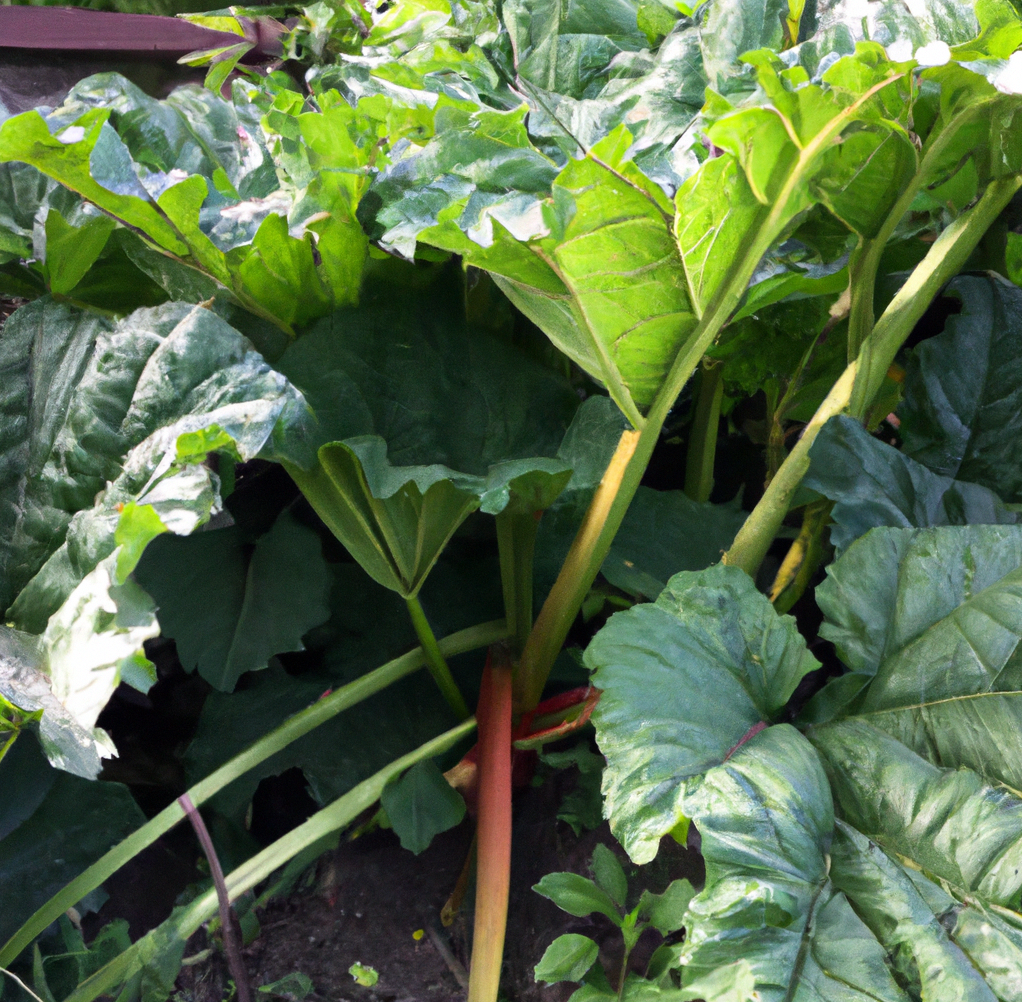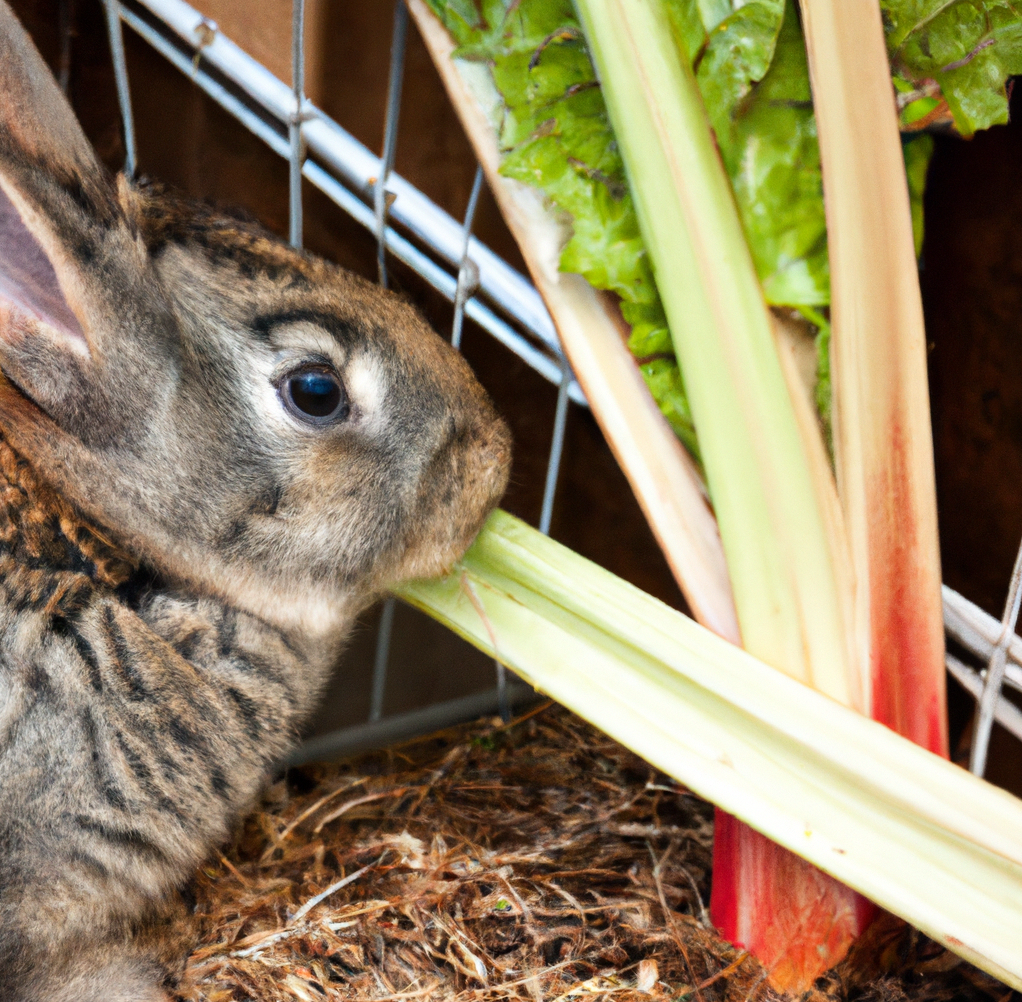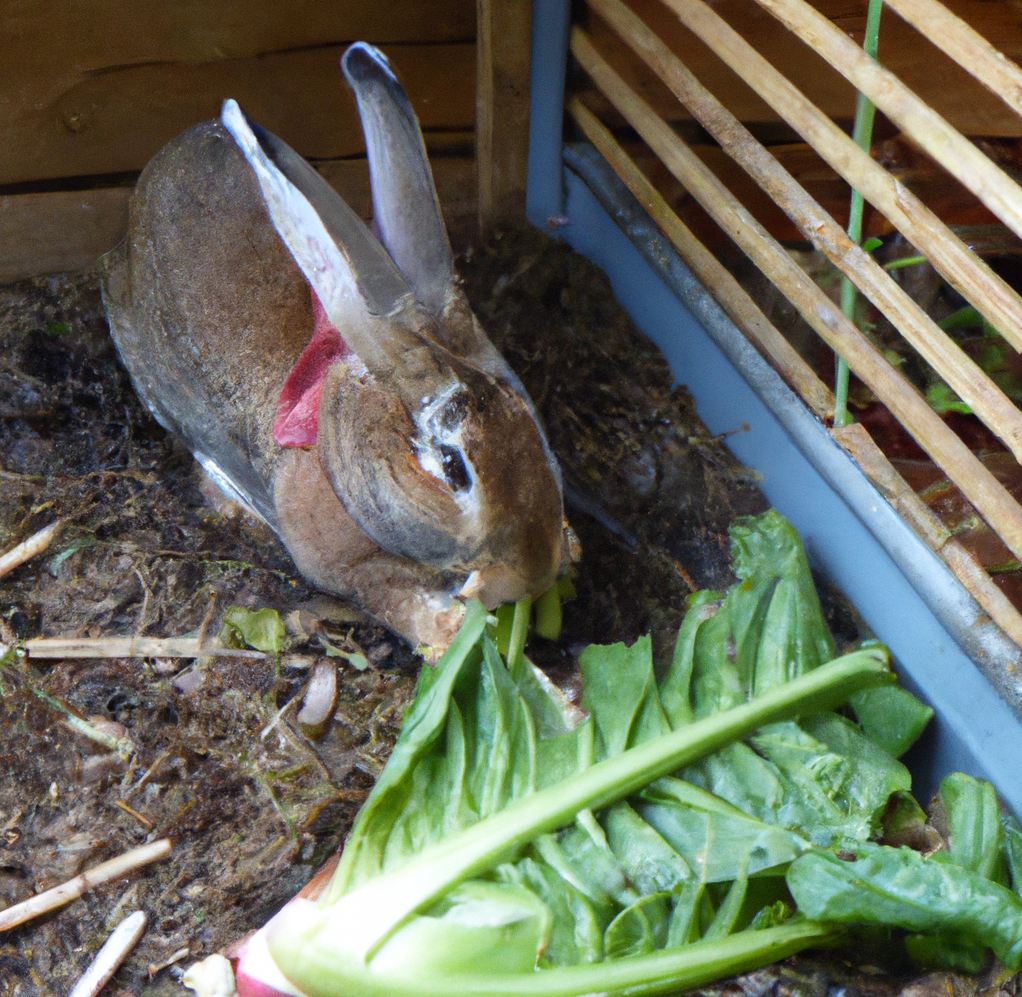Can rabbits eat rhubarb? This is a question that many people have when considering what to feed their pet rabbit. Rhubarb is a perennial plant that produces edible stalks. Its leaves are toxic to rabbits and should not be fed. However, the stalks are safe for rabbits to eat in small amounts as part of a balanced diet. In this article, we will discuss the nutritional benefits of rhubarb and how to safely feed it to your rabbit.
Is Rhubarb Safe for Rabbits to Eat?
Yes, rhubarb is safe for rabbits to eat in moderation. Rhubarb is a vegetable that is high in fiber and contains important vitamins and minerals, including calcium, manganese, and vitamins C and K. However, it is important to note that the leaves of a rhubarb plant are toxic to rabbits and should not be fed to them. The stems of the plant can be fed to rabbits in small amounts, as a treat. When feeding rhubarb to rabbits, it is important to ensure that the stems are washed thoroughly to remove any dirt or pesticides, and that the stems are cut into small pieces to prevent choking. Additionally, it is important to note that feeding too much rhubarb can cause gastrointestinal distress in rabbits, so it should only be given in moderation.
Exploring the Nutritional Benefits of Rhubarb for Pet Rabbits
Rhubarb is a vegetable that provides a variety of nutritional benefits for pet rabbits. While it should be given in moderation, it can be a great addition to a rabbit’s diet. This article will explore the nutritional benefits of rhubarb and the best ways to feed it to pet rabbits.
Rhubarb is high in fiber, which helps to keep a rabbit’s digestive system working properly. It also contains vitamin K, which helps with blood clotting, and a variety of minerals, including calcium, magnesium, and iron. Rhubarb is also a good source of antioxidants, which can help protect rabbits from disease and illness.
When feeding rhubarb to a pet rabbit, it is important to ensure that it is given in moderation. Too much can cause digestive upset. The best way to feed rhubarb is to offer it in small amounts as a treat. It can be served either fresh or frozen. It is important to note that the leaves of the rhubarb plant should not be fed to rabbits, as they contain oxalic acid, which can be toxic.
In conclusion, rhubarb can be a great addition to a pet rabbit’s diet, as it provides a variety of nutritional benefits. It should be given in moderation and should never include the leaves of the plant. With proper feeding, rhubarb can provide a healthy treat for rabbits.
Tips for Feeding Rhubarb to Your Pet Rabbit

1. Introduce rhubarb in small amounts to your pet rabbit – Start by offering a small amount of rhubarb as part of your pet rabbit’s daily diet. Gradually increase the amount over a week or two as your pet gets used to the taste and texture.
2. Provide only fresh or frozen rhubarb – Rhubarb is available fresh or frozen in the supermarket. Avoid canned rhubarb, as it can contain added sugar, salt, and other preservatives that can be harmful for your pet.
3. Wash the rhubarb thoroughly – Before offering it to your pet, be sure to thoroughly wash the rhubarb to remove any dirt or pesticide residue.
4. Feed the rhubarb as part of a balanced diet – Rhubarb should only make up a small portion of your pet rabbit’s daily diet. A balanced diet contains a variety of fruits, vegetables, hay, and pellets.
5. Monitor your pet’s reaction to rhubarb – If your pet rabbit experiences any adverse reactions after eating rhubarb, discontinue feeding it and consult your veterinarian.
How to Prepare Rhubarb Leaves for Your Rabbit
Rhubarb leaves can be a great treat for rabbits, but they must be prepared properly to ensure your rabbit’s safety. Here are some steps to follow when preparing rhubarb leaves for your rabbit:
1. Start by washing the leaves thoroughly in cold water. This will help to remove any dirt, pesticides, or other contaminants that may be present.
2. Peel off the outer layer of the leaves. This outer layer can contain toxins, so it’s important to remove it before feeding the leaves to your rabbit.
3. Cut the leaves into small, manageable pieces. This will make it easier for your rabbit to eat them without choking.
4. Boil the leaves in water for at least 10 minutes. This will help to remove any toxins that may remain after washing and peeling the leaves.
5. Allow the boiled leaves to cool before feeding them to your rabbit.
Following these steps will help ensure that your rabbit is safe when eating rhubarb leaves. Always remember to monitor your rabbit for any signs of digestive upset after eating the leaves. If your rabbit does experience any signs of discomfort, discontinue feeding them rhubarb leaves and contact your veterinarian for further advice.
The Pros and Cons of Feeding Rhubarb to Pet Rabbits
Feeding rhubarb to pet rabbits can be a beneficial and nutritious part of their diet, but it is important to understand the potential risks associated with its consumption before introducing it. This article will discuss the pros and cons of feeding rhubarb to pet rabbits.
Pros
Rhubarb is a nutritious and tasty treat for pet rabbits, as it is high in fiber, calcium, and vitamins A and C. It can help promote healthy digestion and improve dental health. Rhubarb also contains antioxidants, which can help keep the rabbit’s immune system functioning optimally.
Cons
Rhubarb contains oxalic acid, which is toxic to rabbits in large amounts. For this reason, it is important to feed rhubarb in small amounts, no more than a few tablespoons at a time. If too much is consumed, it can cause kidney failure and even death. Additionally, rhubarb leaves are more toxic than the stalks, so only the stalks should be fed to rabbits. Finally, rhubarb should never be fed to pregnant or nursing rabbits, as it can cause miscarriage or stillbirth.
In conclusion, feeding rhubarb to pet rabbits can be a beneficial addition to their diet, but it is important to understand the risks associated with it before introducing it into their diet. The stalks should be fed in small amounts and never to pregnant or nursing rabbits. When done properly, however, rhubarb can be a tasty and nutritious treat for pet rabbits.
Creative Ways to Serve Rhubarb Greens to Your Pet Rabbit

1. Freeze the Rhubarb Greens: Freezing the rhubarb greens is a great way to preserve them for your pet rabbit. Simply wash the rhubarb greens and then blanch them for about one minute. Once they have been blanched, place them in a sealable bag and freeze them. When you are ready to serve, simply thaw the greens and serve them to your pet rabbit.
2. Make a Rhubarb Leaf Salad: Make a delicious rhubarb leaf salad for your pet rabbit by combining rhubarb greens with other tasty ingredients such as lettuce, carrots, or celery. This can be served either fresh or lightly steamed.
3. Add Rhubarb Greens to Pellets: You can also mix rhubarb greens in with your rabbit’s regular pellets. This is a great way to add extra nutrition and flavor to your pet’s diet while also providing a variety of textures.
4. Serve as a Treat: Rhubarb greens can also be served as a treat. Simply wash and cut the greens into small pieces and serve them as a snack. Your pet rabbit will love the taste and texture of this treat.
By following these tips, you can easily incorporate rhubarb greens into your pet rabbit’s diet. Not only can your pet benefit from the nutrition provided by the greens, but they will also enjoy the delicious flavor and texture.
Conclusion
In conclusion, rabbits can eat rhubarb plants, leaves, greens, and stalks. It is important to remember that rhubarb should be given in moderation and in small amounts. Feeding too much rhubarb can result in digestive upset or even worse, death. Additionally, the leaves of the rhubarb plant should not be given to rabbits, as these are the most toxic part of the plant. With the right precautions, however, rabbits can enjoy this succulent vegetable as part of their diet.

